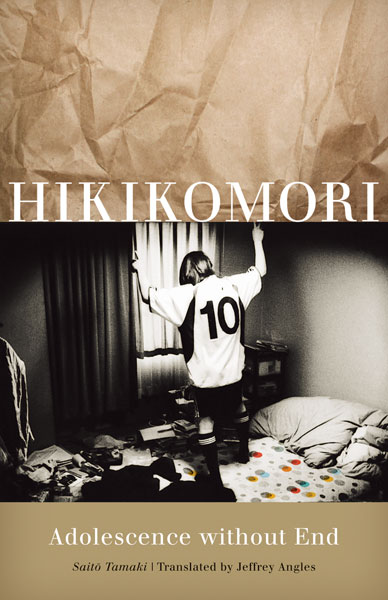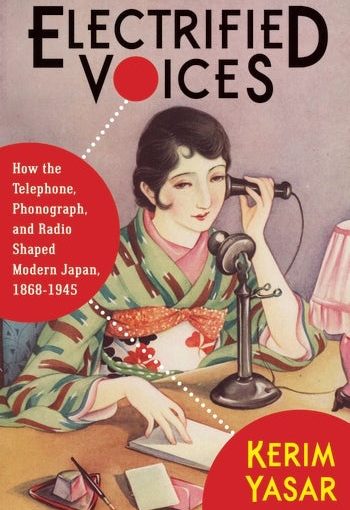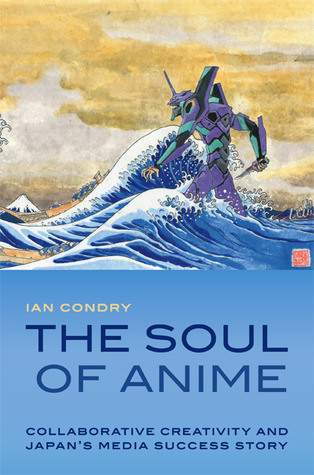Saitō Tamaki. Hikikomori: Adolescence Without End. Trans. Jeffrey Angles. Minneapolis: University of Minnesota Press, 2013.
Amy Borovoy
The phenomenon of hikikomori, in which Japanese teenagers and young adults withdraw into their homes or their rooms, limiting contact with outsiders for six months or more, is in many ways mysterious. Is it a mental illness that should be listed in the Diagnostic and Statistical Manual—the American guide that helps psychiatrists and other clinicians, internationally, define and treat mental illness? Or is it a “culture-bound syndrome,” brought about the particularities of Japanese society, the pressures of the Japanese exam system, or perhaps shame related to the inability to find work among young men?[1] Or is it merely a choice that expresses social protest, an aesthetic sensibility related to the immersion in popular culture of the otaku?
Saitō Tamaki’s Hikikomori: Adolescence Without End is a meditation on hikikomori as a mental illness, paying particular attention to its uses as a diagnostic category. Saitō became the leading psychiatric thinker about hikikomori in Japan after the original Japanese version, Shakai-teki hikikomori: Owaranai shishunki, was published by PHP Institute, Inc. in 1998, followed by his Hikikomori bunkaron in 2003.[2] Jeffrey Angles’ English translation is of great value for scholars of Japanese society, popular culture, and medicine, and for psychiatrists internationally. The book sets aside some of the rather one-sided interpretations that have reduced the phenomenon to a resultof Japan’s social ills, including the idea put forward during Japan’s decade of economic stagnation by journalist Michael Zielenziger, Shutting Out the Sun: How Japan Created its Own Lost Generation (2006), that hikikomori is the individual expression of a Japanese national ethos characterized by parochialism, withdrawal, and isolationism—exemplified by excessive bureaucracy, closed markets, and a lack of entrepreneuriality.[3]
Saitō’s main claim is that many clinicians, in diagnosing hikikomori, mistake the “symptom” for the “cause.” Too often, Saitō argues, symptoms such as obsessive-compulsive behavior, fear of others, paranoid delusions, and so forth are mistaken for the root problem, and hikikomori are diagnosed as “obsessive-compulsive” “anthropophobic” (fearing others), or schizophrenic. But to diagnose hikikomori as obsessive-compulsive disorder or anthropophobia, is, for Saitō, the equivalent of diagnosing a cold as “coughing syndrome” or “headache syndrome” (26). Saitō believes that many of the symptoms that accompany social withdrawal are “secondary symptoms;” that is, they are caused by the withdrawal itself, the prolonged lack of social contact, monotony of environment, unhealthy reversal of day and night, poor diet, and so forth (70-71). Drawing on Harry Stack Sullivan, Saitō believes that the root cause of hikikomori lies in a failed process of maturity and the establishment of a “framework for personality.” Adolescence is a particularly important moment in resolving the various conflicts that lead to maturity, and failure to resolve these conflicts can lead to permanent damage (28).[4]
Although the nature of the developmental disorder he is suggesting is never fully specified in a psychodynamic sense, Saitō’s emphasis on development and adolescence leads him to some powerful claims, namely that we must differentiate hikikomori from other forms of mental illness which are a “result of the structure of the brain itself.” Hikikomori, argues Saitō, “originates in the mind” as the result of individual experience and trauma. Thus, “One should exercise caution in labeling social withdrawal as ‘pathological’” (12, 27).
I’d like to take a moment to examine these bold claims and to suggest that Saitō’s argument is shaped by assumptions deeply rooted in the history of Japanese psychiatry and in the treatment of developmental abnormalities in Japanese society more broadly, particularly the education system. Can we definitively claim that hikikomori can be differentiated from other forms of mental illness? Given the overlap between hikikomori and other “textbook” symptoms associated with depression, schizophrenia, and OCD, it is a contentious claim.
Epidemiological studies have shown that those who suffer from hikikomori have significantly higher comorbidity (co-occurance) rates with other mental illnesses, particularly depression, than do those who have not experienced hikikomori.[5] Indeed some of the key diagnostic criteria for depression are present in many, if not most, hikikomori cases: depressed mood and/or loss of interest or pleasure in life activities; impairment in social, work, or other important areas of functioning; insomnia or sleeping too much; agitation; fatigue or loss of energy; feelings of worthlessness or excessive guilt; diminished ability to think or concentrate, or indecisiveness; substance abuse; or recurrent thoughts of death.[6]
For example, consider the young man described in Saitō’s Introduction, who began acting erratically in high school. He received a college diploma through a correspondence course but became preoccupied with orderliness in the house. Continually unemployed, he slept during the day and stayed up at night, keeping his windows and doors locked and communicating with his parents only in writing. When his parents purchased a high-priced audio system that did not meet his specifications, he threatened them if they did not “pay him a fine.” Reading this sort of case study, I imagine an American psychiatrist would associate the symptoms with other forms of mental illness such as depression, bi-polar disorder, schizophrenia, or obsessive-compulsive disorder. Someone suffering a profound break from reality would seem to be experiencing something more powerful than what could be accounted for by a developmental disorder or the secondary effects of prolonged isolation, and the symptoms suggest at least the possibility of an organic condition, relating to neurochemistry or physiology. All of the cases Saitō describes manifest the onset of symptoms in early adulthood, which is the textbook time of onset for major psychosis. Symptoms also often include the insomnia and reversal of day and night that is characteristic of depression.
This does not mean that all hikikomori is caused by mental illness. But Saitō’s insistence that hikikomori constitutes its own illness, and that it is rooted in the adolescent failure to cultivate “immunity to trauma,” needs to be examined in the context of the history Japanese psychiatry, for it seems to carry some of the influence of a broader culture of mental health care in Japan. Anthropologist Junko Kitanaka’s important book, Depression in Japan: Psychiatric Cures for a Society in Distress, tells us that Japanese psychiatry, rooted in a German neuro-pathological approach inherited from Emil Kraepelin, has historically embraced a rigorous separation between “biogenic” mental illness (caused by neurochemical and genetic factors) and “psychogenic” mental illness (“neurosis”) caused by situationally-induced factors. [7] Though medications are often used to treat both forms, Japanese psychiatrists have traditionally regarded the latter as outside their domain of care, and patients with situationally-induced depression or sadness are often exhorted to learn from their suffering or to put “mind over matter.” But increasingly Japanese psychiatrists agree that situationally-induced depression and biogenic depression are difficult to distinguish. Nevertheless, these distinctions continue to pervade Japanese psychiatry, so that situationally-induced depression has been difficult to recognize as “real depression.”
I think we should see Saitō’s effort to distinguish hikikomori from biologically-based mental illness in this context. Contrast, on the one hand, Saitō’s assertion that we must treat hikikomori as a disorder of the “mind” (rather than the “brain”) with, on the other, the lurch towards biological psychiatry in the United States, where evidence suggests that psycho-pharmaceuticals are over-prescribed, and “talking therapies” and other forms of social support are no longer available to many. Saitō is no Luddite; he is a cosmopolitan psychiatrist and psychotherapist, well-aware of American and European treatment protocols and diagnostic tools. In contrast with the growing move to identify a vast array of mental symptoms as diagnosable and treatable through pharmaceutical inverventions, Saitō insists that hikikomori is not the result of biological factors but is rather rooted in individual experience and suffering.
Some of the most fascinating sections of his book explore how a clinician should make such distinctions, differentiating, for example, the delusions suffered by a schizophrenic from the “delusional thought” suffered by someone in social withdrawal. Saitō agrees that distinguishing the withdrawn person’s claims that “the neighbors were talking about me outside my window” or that “someone stopped their car in front of the house and was spying on me” from a schizophrenic person’s paranoia is difficult (57). The psychiatric diagnostic manual, DSM-IV, is not helpful, he says, since the characteristics of schizophrenia such as “failure to achieve what would have been expected for the individual,” “social isolation,” or “restrictions in the range and intensity of emotional expression” also characterize the typical hikikomori patient (56). Nonetheless, he argues, in contrast with a schizophrenic’s delusions, the “delusional thoughts” of the hikikomori patient are understandable “if we try to think through the chain of cause and effect that led them to their current mind-set. We might recognize their thoughts as delusional, but it is still possible to sympathize with their feelings and understand the ways in which they feel they have suffered as victims” (57). At bottom, this is a deeply humanistic book, which, despite its faith in psychiatry and knowledge of international diagnostics, warns us against medicalization, and urges us to recognize and hear a patient’s individual pain.
We might assume that in our current world of globalized psychopharmacology, and with the universality of the Diagnostic and Statistical Manual (recently updated from the fourth edition, DSM-IV-TR [2000] to the fifth edition, DSM-V [2013]) that diagnostics and prescriptions no longer differ significantly across cultures. However, Saitō’s book suggests that differences persist, at least along subtle lines. In my own study of hikikomori in the context of mental health management and special education, I found a great deal of resistance to recognizing and diagnosing developmental disorders and mental illness, including mild autism or retardation, among young people.[8]
Saitō’s book is balanced, empirically informed, and full of insights translatable to other social contexts. Although he believes that hikikomori is an illness that must be treated with empathy and particular kinds of social support, he does not share the assumption (put forth in some grass roots support groups for mothers dealing with the hikikomori children) that a mother’s love and patience can rescue a child from hikikomori. Rather, Saitō urges drawing boundaries. His section on “containing violence” (worthwhile reading for anyone dealing with this issue) defines the acceptance of violence (or the urge to quell it through love) as “codependence” and urges contact with the police. He also encourages parents to draw the line with verbal and mental comfort for overly-needy children and to resist physical comfort.
The book says little about the relationship between hikikomori and media consumption or the popular-cultural representations of hikikomori. (Saitō does treat the relationship to cyberculture in his subsequent book, Hikikomori bunkaron.) The notion of hikikomori as social practice, in contrast to Saitō’s notion of an illness, continues to be used by sociologists, writers, and other social commentators as a prism for exploring social values and popular culture. In fact, psychiatric categories have been productive fodder for social reflection in contemporary Japan, where social issues are often discussed in terms of “syndromes” such as “co-dependency” (kyōizonshō) or “retired husband syndrome” (shujin zaitaku sutoresu shōkōgun).[9] Sociologist Miyadai Shinji has even argued that Saitō’s study itself shaped popular culture in Japan. Miyadai says that by treating hikikomori as an illness and thus distinguishing it from “otaku,” Saitō’s work has had the effect of de-pathologizing otaku culture and making it more acceptable as an alternative lifestyle.[10] So, while the question, “What is hikikomori?” may remain to be answered, the phenomenon has generated some highly fruitful explorations of Japanese social institutions, popular culture, and psychiatry itself.
Amy Borovoy is associate professor of East Asian Studies at Princeton University. She has written on alcoholism and codependency in Japan, eating disorders and notions of gendered adulthood, and more recently on the issue of hikikomori in the context of mental health care in Japan. Her current book manuscript concerns postwar Japan studies and the American search for a communal modernity in Japan. On this topic, her essay on psychiatrist Takeo Doi was published in the Journal of Japanese Studies.
[1] Psychiatrists who studied the phenomenon in the 1960s described it in ethno-psychological terms as “withdrawal neurosis” (taikyaku shinkeishō). See Alan R. Teo’s helpful review, “A New Form of Social Withdrawal in Japan: A Review of Hikikomori,” International Journal of Social Psychiatry, (30 June 2009), http://isp.sagepub.com/content/early/2009/06/30/0020764008100629.full.pdf.
[2] Saitō Tamaki, Shakai-teki hikikomori: owaranai shishunki(Tokyo: PHP Shinsho 065, 1998); see also Hikikomori bunkaron (Tokyo: Hatsubaimoto Kinokuniya Shoten, 2003). Hereafter, page numbers from Angles’ English translation of the 1998 text will be given parenthetically in the review.
[3] Michael Zielenziger, Shutting Out the Sun: How Japan Created Its Own Lost Generation (New York: Nan A. Talese, 2006), 26-28.
[4] Saitō’s evidence for the centrality of adolescent development to hikikomori behavior comes in part from his observation that hikikomori is sometimes correlated with school refusal behavior, and that symptoms closely mimic symptoms of adolescent rebellion, including skipping school, violent fits, phobias like fear of having body odor (bromidrophobia), and certain forms of OCD (28). Saitō’s own practice led him to believe that developmental problems are underdiagnosed and continue to affect a substantial portion of even his adult clients.
[5] Norito Kawakami, Tadashi Takeshima, Yutaka Ono, Hidenori Uda, Yukihiro Hata, Yoshibumi Nakane, Hideyuki Nakane, Noboru Iwata, Toshiaki Furukawa, and Takehiko Kikkawa, “Twelve-month Prevalence, Severity, and Treatment of Common Mental Disorders in Communities in Japan: Preliminary Findings from the World Mental Health Japan Survey 2002-2003,” Psychiatry and Clinical Neurosciences 59 (2006): 441-452.
[6] American Psychiatric Association, “Criteria for a Major Depressive Episode,” DSM-IV-TR, Diagnostic and Statistical Manual of Mental Disorders, http://dsm.psychiatryonline.org/content.aspx?bookid=22§ionid=1890406#2132.
[7] Junko Kitanaka, Depression in Japan: Psychiatric Cures for a Society in Distress (Princeton, NJ: Princeton University Press), 68-75, 110-118.
[8] Amy Borovoy, “Japan’s Hidden Youths: Mainstreaming the Emotionally Distressed in Japan,” Culture, Medicine, and Psychiatry 32, no. 4 (2008): 559-561.
[8] Amy Borovoy, The Too-Good Wife: Alcohol, Codependency, and the Politics of Nurturance in Post-War Japan (Berkeley and Los Angeles: University of California Press, 2005).
[10] See Jonathan Abel’s helpful discussion, “Can Cool Japan save Post-Disaster Japan? On the Possibilities and Impossibilities of a Cool Japanology,” International Journal of Japanese Sociology, no. 20 (2011): 68.



